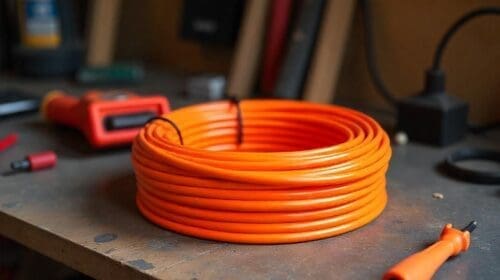Subsea electrical systems face a number of risks to their integrity. The cost of a failure of such a system can run into millions in terms of lost production and repairs. The return on investment of a system that can maximize system availability and integrity can, therefore, be rapid. Modern technology offers solutions that can reduce the cost of repairs or, in the case of Viper V-LIFE technology, actually heal subsea cables without the need for costly intervention.
There are a number of failure modes from which subsea electrical systems are at risk which may result in system degradation or breakdown. Failures may occur due to flaws in system design, installation problems, the harsh operating environment, or component manufacture/assembly faults. Every electrical jumper, connector or penetrator is a potential source of failure. Indeed, most of the commonly used insulation materials experience develop ‘water trees’ (a phenomenon created by the combination of high voltage electrical stress and the presence of water which eventually leads to water ingress) or experience other water ingress simply due to being submerged in saltwater over periods of time.
With so many potential problem areas, high penalties for system failure, and evidence that faults will occur despite best testing efforts; it makes sense for operators to install continuous electrical integrity monitoring systems. These Line Insulation Monitoring (LIM) devices generally measure the Insulation Resistance (IR) of each of the power circuits in the system, typically by impressing a signal voltage between the ac power supply conductors and ‘ground’ and measuring the resulting leakage current. Resulting measurements can then be trended to predict when failures are likely to occur. To provide accurate and stable readings, LIM devices need to work well at the lower levels of IR experienced with degraded systems and particularly with long cable lengths.
Getting more detailed diagnostics
Installing LIM units at the topside power supply only provides a limited picture of what is happening below the water surface. Measurements from a single point do not provide information about where any fault is in the network so that a suitable intervention can be planned. Separate monitoring of each distribution leg within the system overcomes this limitation.
Preventative measures
The problem is that LIM units only provide the operator with information about when a failure is likely to occur. While devices that are designed to provide more detailed information about when and where a failure is likely, give the operator the opportunity to minimize the impact of such a failure, such systems do not prevent or delay the breakdown in system integrity.
Operators now have an alternative to passive monitoring with technology which actively heals low IR and minimises or even mitigates the impact of water ingress into subsea insulation for AC power and signal communication lines. Viper V-LIFE technology uses electro-kinetic and electrochemical processes to not only measure but also increase IR in subsea cables. With the system already in active use with major oil operators, it has been proven to offer significant benefits and extend the life of failing umbilicals without subsea intervention
Summary
With the high cost of subsea failures, every operator is ultimately aiming for higher system availability. This can be maximised with consideration of design, manufacture and test of the system to increase fault tolerance and reduce risk of performance degradation. However, it has been shown that systems beneath the sea still degrade and current levels of testing do not expose the system to the rigors it experiences once installed.
Modern monitoring solutions can provide a clearer picture about limits of IR, fault isolation and time to failure to give operators the opportunity to minimise the impact of failure modes and maximise system availability. Where suitable for the application, the use of active healing technology has also been shown to increase the life of umbilicals and mitigate previously unavoidable degradation to the point of failure.
ABOUT VIPER INNOVATIONS LTD
Viper Innovations Ltd was founded in 2007 and is headquartered in Portishead, UK, with an office in Aberdeen and an international sales network.
Oil and gas operations are commonly found in remote locations far from company headquarters. Now, it's possible to monitor pump operations, collate and analyze seismic data, and track employees around the world from almost anywhere. Whether employees are in the office or in the field, the internet and related applications enable a greater multidirectional flow of information – and control – than ever before.





![Why Enhanced Geothermal Energy Could Be Your Next Smart Investment [2025 Guide]](https://b1006343.smushcdn.com/1006343/wp-content/uploads/2025/06/Why-Enhanced-Geothermal-Energy-Could-Be-Your-Next-Smart-Investment-2025-Guide-500x280.jpg?lossy=2&strip=1&webp=1)




